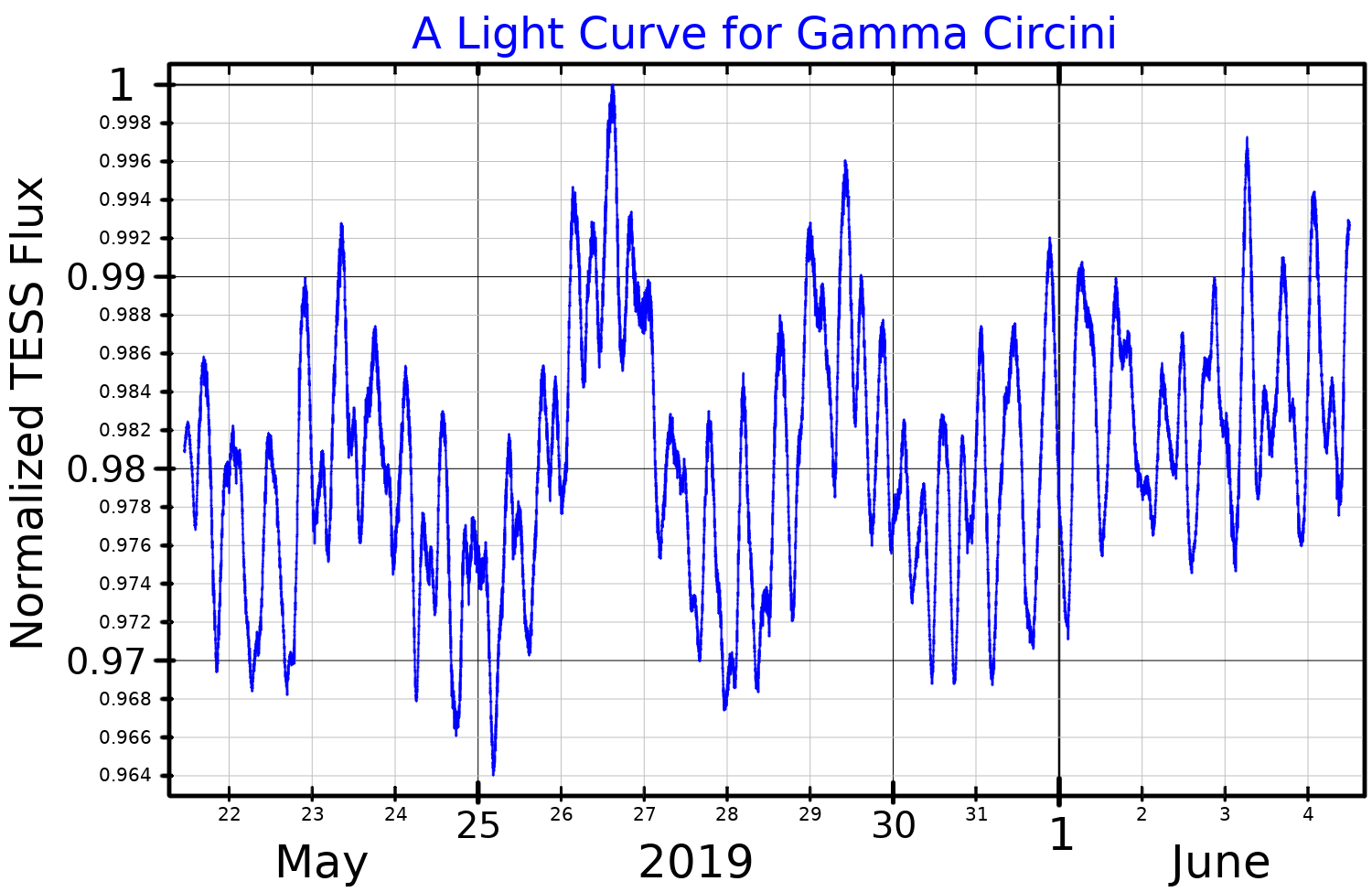Gamma Circini on:
[Wikipedia]
[Google]
[Amazon]
Gamma Circini, Latinized from γ Circini, is a  This is a wide
This is a wide
star system
A star system or stellar system is a small number of stars that orbit each other, bound by gravity, gravitational attraction. It may sometimes be used to refer to a single star. A large group of stars bound by gravitation is generally calle ...
in the constellation
A constellation is an area on the celestial sphere in which a group of visible stars forms Asterism (astronomy), a perceived pattern or outline, typically representing an animal, mythological subject, or inanimate object.
The first constellati ...
Circinus. It was noted as a double star
In observational astronomy, a double star or visual double is a pair of stars that appear close to each other as viewed from Earth, especially with the aid of optical telescopes.
This occurs because the pair either forms a binary star (i.e. a ...
by Herschel in 1835, who estimated the separation as 1 arc second
A minute of arc, arcminute (abbreviated as arcmin), arc minute, or minute arc, denoted by the symbol , is a unit of angular measurement equal to of a degree. Since one degree is of a turn, or complete rotation, one arcminute is of a tu ...
. It is visible to the naked eye with an apparent visual magnitude
Apparent magnitude () is a measure of the brightness of a star, astronomical object or other celestial objects like artificial satellites. Its value depends on its intrinsic luminosity, its distance, and any extinction of the object's light ca ...
of 4.51. Based upon an annual parallax shift of 7.27 mas, it is about 450 light-year
A light-year, alternatively spelled light year (ly or lyr), is a unit of length used to express astronomical distances and is equal to exactly , which is approximately 9.46 trillion km or 5.88 trillion mi. As defined by the International Astr ...
s away.
 This is a wide
This is a wide binary star
A binary star or binary star system is a system of two stars that are gravitationally bound to and in orbit around each other. Binary stars in the night sky that are seen as a single object to the naked eye are often resolved as separate stars us ...
system and may even be a triple star. The two visible components orbit each other with a preliminary estimated period of 258 years and a large eccentricity
Eccentricity or eccentric may refer to:
* Eccentricity (behavior), odd behavior on the part of a person, as opposed to being "normal"
Mathematics, science and technology Mathematics
* Off-Centre (geometry), center, in geometry
* Eccentricity (g ...
of 0.931. As of 2014, the visible components have an angular separation
Angular distance or angular separation is the measure of the angle between the orientation of two straight lines, rays, or vectors in three-dimensional space, or the central angle subtended by the radii through two points on a sphere. When t ...
of 0.80 arc second
A minute of arc, arcminute (abbreviated as arcmin), arc minute, or minute arc, denoted by the symbol , is a unit of angular measurement equal to of a degree. Since one degree is of a turn, or complete rotation, one arcminute is of a tu ...
s on a position angle
In astronomy, position angle (usually abbreviated PA) is the convention for measuring angles on the sky. The International Astronomical Union defines it as the angle measured relative to the Celestial pole, north celestial pole (NCP), turning pos ...
of 359°.
The primary star, component A, is a B-type subgiant
A subgiant is a star that is brighter than a normal main-sequence star of the same spectral class, but not as bright as giant stars. The term subgiant is applied both to a particular spectral luminosity class and to a stage in the evolution ...
star with a stellar classification
In astronomy, stellar classification is the classification of stars based on their stellar spectrum, spectral characteristics. Electromagnetic radiation from the star is analyzed by splitting it with a Prism (optics), prism or diffraction gratin ...
of B5 IV. Based upon isochrone curve fitting it is hypothesized to be a pair of matching B5 stars, and is a Be variable with an uncertain maximum. It has an effective temperature
The effective temperature of a body such as a star or planet is the temperature of a black body that would emit the same total amount of electromagnetic radiation. Effective temperature is often used as an estimate of a body's surface temperature ...
of 15,135 K and an estimated mass six times that of the Sun. The companion, component B, is an F-type main-sequence star with a stellar classification
In astronomy, stellar classification is the classification of stars based on their stellar spectrum, spectral characteristics. Electromagnetic radiation from the star is analyzed by splitting it with a Prism (optics), prism or diffraction gratin ...
of F8 V. It has an effective temperature
The effective temperature of a body such as a star or planet is the temperature of a black body that would emit the same total amount of electromagnetic radiation. Effective temperature is often used as an estimate of a body's surface temperature ...
of 4,786 K.
References
External links
*http://server3.wikisky.org/starview?object_type=1&object_id=1111 {{DEFAULTSORT:Gamma Circini B-type subgiants F-type main-sequence stars Be stars Circinus Circini, Gamma Durchmusterung objects 136415 075323 5704